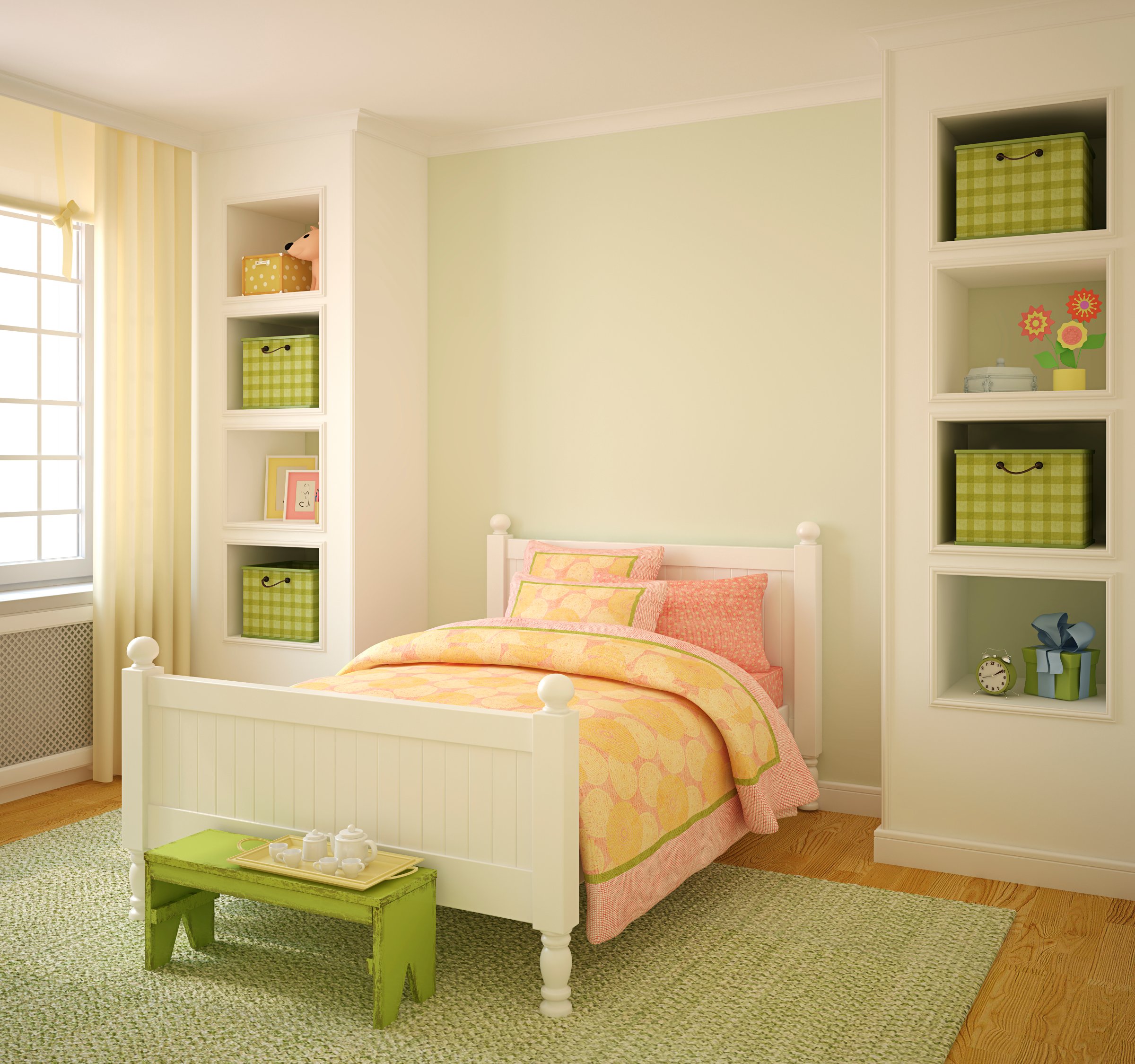
Even if you haven’t read her No. 1 New York Times best-selling book, The Life-Changing Magic of Tidying Up, you’ve likely heard of Japanese organizational expert, Marie Kondo, and her innovative KonMari method. (Not too familiar? Here’s the gist: declutter by category and only keep the things that “spark joy” in your life.)
But how can you use the KonMari method in your child’s room when it seems that everything in it “sparks joy” for your kid? It’s not like you’ll be tossing out any of their beloved (and endless) toys anytime soon.
Luckily, we were able to put the question to Kondo herself. The guru shared a few simple guidelines below:
1. It’s Okay to Start Early
Kondo suggests that children as young as three years old can use a modified version of the KonMari method. “What a parent can certainly do with children is to make sure that they understand that for each item they own, there should be a place in the room,” she says. “And that after an item is used, it should be put back in its proper place.” If they keep that idea in mind, tidying up after playtime will become more of a habit and less of a disaster.
2. Tackle the Clothes First
When you’re beginning to use the KonMari method in your kid’s room, tackle the closet and drawers first. Gather all of your child’s clothes and put them in a designated spot, like the center of the bedroom. Go through each piece of clothing and see if it “sparks joy” or is still useful to your child. Then, donate or sell the items that are no longer needed.
3. Create a Plan for Toy Storage
Kondo says there’s no “right” number of toys to get rid of or keep, since each child is different. She suggests deciding with your child on a space where toys will be kept, whether it’s in his or her bedroom, or in a common area of the house, like the living or family room. “Tell your child that he or she will be responsible for that space and ask them to keep the toys there when they’re not in use,” she says. You can use the principles of the KonMari method to decide which toys are worth keeping and which can be tossed—which ones your kid still enjoys and which ones he or she has outgrown.
4. Don’t Feel Guilty About Throwing Away Artwork
Every parent experiences the excruciating task of deciding what to do with the many watercolor paintings and crafts your child brings home from school. Kondo says it’s okay to toss the pieces that aren’t your or your child’s particular favorites anymore. “Say thank you to the artwork for the weeks or months of pleasure it has given to your family, and let it go,” she says. “For the pieces you choose to keep, storing drawings and paintings is easiest and most efficient if you roll them up and put them into a paper tube, stored upright. But the best way to appreciate children’s artwork is to display it in your home.”
This article originally appeared on Real Simple
More from Real Simple:
More Must-Reads From TIME
- The 100 Most Influential People of 2024
- Coco Gauff Is Playing for Herself Now
- Scenes From Pro-Palestinian Encampments Across U.S. Universities
- 6 Compliments That Land Every Time
- If You're Dating Right Now , You're Brave: Column
- The AI That Could Heal a Divided Internet
- Fallout Is a Brilliant Model for the Future of Video Game Adaptations
- Want Weekly Recs on What to Watch, Read, and More? Sign Up for Worth Your Time
Contact us at letters@time.com